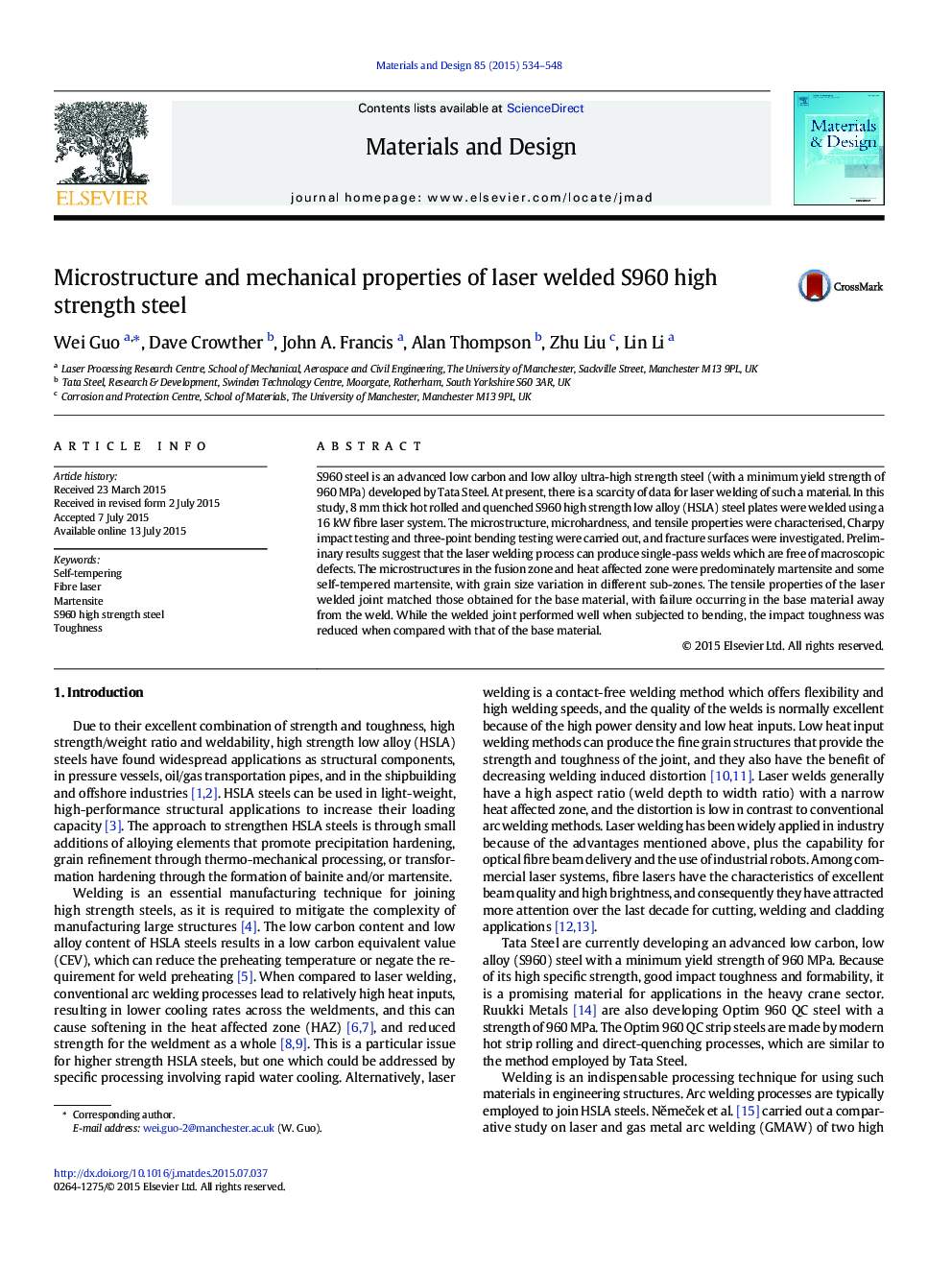| Article ID | Journal | Published Year | Pages | File Type |
|---|---|---|---|---|
| 828326 | Materials & Design | 2015 | 15 Pages |
•Fibre laser single pass welding was applied for the first time to join a newly developed 8 mm thick S960 high strength steel.•The microstructures evolution in each sub-zone was characterised in detail.•Laser welded joint displayed a good tensile and bending properties.•Charpy impact toughness of the joint was evaluated at different temperatures.
S960 steel is an advanced low carbon and low alloy ultra-high strength steel (with a minimum yield strength of 960 MPa) developed by Tata Steel. At present, there is a scarcity of data for laser welding of such a material. In this study, 8 mm thick hot rolled and quenched S960 high strength low alloy (HSLA) steel plates were welded using a 16 kW fibre laser system. The microstructure, microhardness, and tensile properties were characterised, Charpy impact testing and three-point bending testing were carried out, and fracture surfaces were investigated. Preliminary results suggest that the laser welding process can produce single-pass welds which are free of macroscopic defects. The microstructures in the fusion zone and heat affected zone were predominately martensite and some self-tempered martensite, with grain size variation in different sub-zones. The tensile properties of the laser welded joint matched those obtained for the base material, with failure occurring in the base material away from the weld. While the welded joint performed well when subjected to bending, the impact toughness was reduced when compared with that of the base material.
Graphical abstractFigure optionsDownload full-size imageDownload as PowerPoint slide
